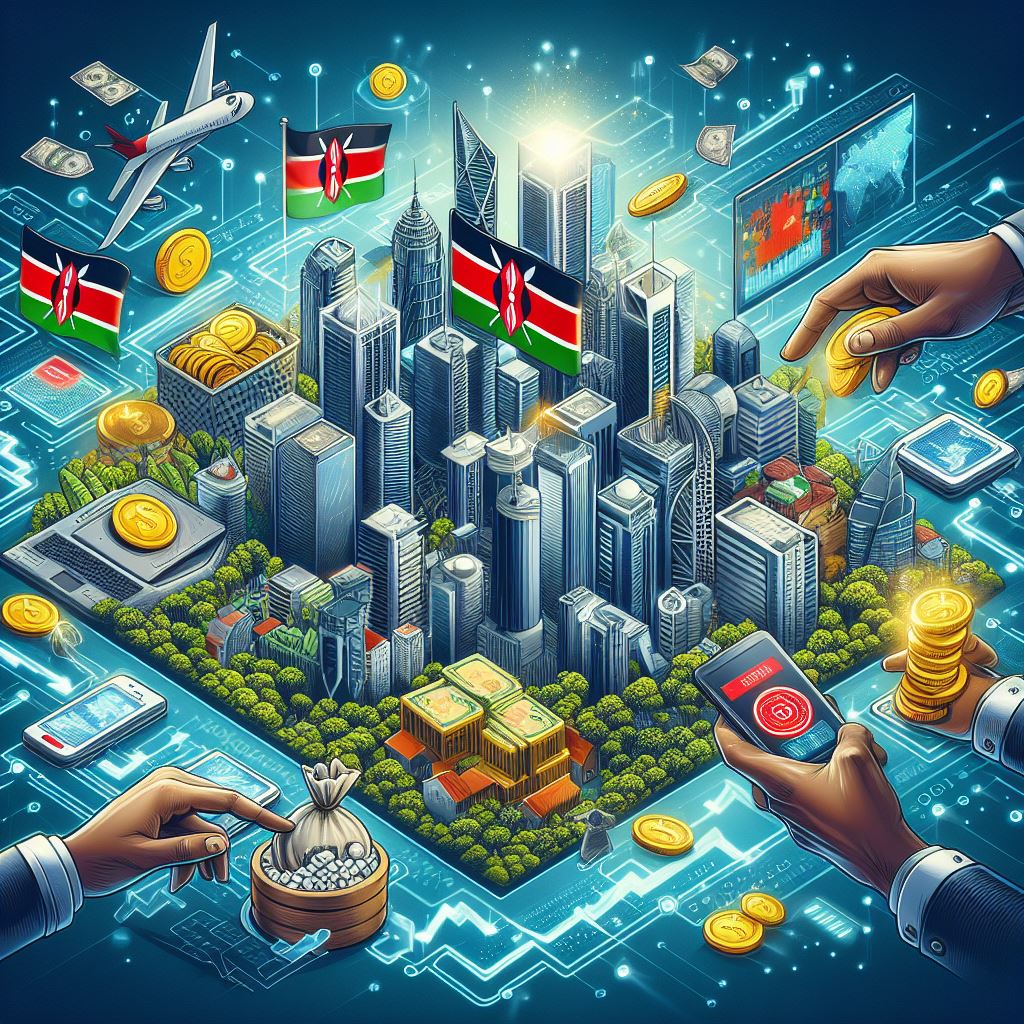Sustainable farming involves the application of environmentally friendly methodology such as crop cycling, minimum tillage and energy. It minimizes the use of chemicals, water, and improves soil quality thus protects human surrounded ecosystems and support the presence of more than one species/organism, and counteracts climate change. Organic farming is peaceful for the world and peaceful for the people; it will help make food secure and also reduce the harms of climate change.
Sustainable Agriculture: Practices Contributing to a Greener Future
Introduction
As the global population is anticipated to reach 9,000,000,000 by 2050, the pressures on food are getting high. This high production, on the other hand, is gotten in sharp contrast to the rate at which natural resources are exploited in the conventional farming. Excessive use of farm yard manure, narrowed crop rotations, intensive tillage practices, pesticides, and synthetic fertilizer are some of the ways human beings dem-egeade the health of the soil. This often leads to large increases in emissions of greenhouse gases and generally, more water pollution. While, on the other hand, there is a more optimistic outlook in sustainable agriculture which addresses production of food methods that are believed to be friendly to, or restorative of, the natural world. It is only when tempered with sophisticated technology and nowadays’ approaches that the time-honored traditions make for an appropriate combination and productivity in farming. We will discuss general strategies of sustainable agriculture and how are they leading towards more sustainable, resiliency agriculture.
Main practices which are associated with sustainable agriculture are:
1. Crop Rotation and Diversity
Of the two methods of land use, periodic cropping undoubtedly ranks higher since different crops are grown on a parcel of land over a certain time. This can be done for example by changing the type of crops planted during one season where farmers will usually plant legume crops in one season, and grains in another. In this way, when other crops are planted afterwards, they will automatically find available nutrient as nitrogen from crops which include beans and peas. Since crop rotation helps to control the number of pests and increases the duration between two crops infected with a particular disease, there is use of less chemical pesticides. Different cropping practices mimic a diverse habitat that enabling health soils and the crops grown in the farms.
Crop rotation is an ally of crop diversity, for diverse crops are somewhat mutually coherent, each supporting the other in a bid to obtain a more harmonized ecosystem that is less sensitive to stress. Growing several crops also reduce greatly the risk of a farmer because his yields unlike that of crops which specializes, having a pool of crops to sell, meaning there is insurance in case the market goes and there is an attack on his or her crops by pests. In general, diversified cropping systems attract a more diverse insect community of pollinators and natural enemies for pest control. In fact, they have been for all known history the two principles that rotation and diversity have been traditionally upon which sustenance and productivity of farmland has rested.
2. Conservation Tillage
Conservation tillage is any farming technique that does not prepare the soil for crop planting by tilling unlike tillage systems. Old conventional tillage disrupts aggregates in the natural condition, decreases organic matter present in the soil and liberates carbon in to the air. Minimum tillage methods such as no-till or strip-till farming operations turn over a comparatively small part of the earth’s surface, keeping carbon in the soil and supporting useful earth dwellers.
Conservation tillage also increases the ability of the soils to withstand the adverse effects of harsh weather conditions such as drought and water logging because the organic matter content is conserved and improved water absorption is achieved. One of the specific benefits of the reduced tillage method is the amount of fuel save d when farming hence, enhance the reduction of carbon emissions. In general, I conclude that conservation tillage is one of the most effective measures for maintaining soil health and for building the resilience of agro systems.
3. Integrated Pest Management (IPM )
Integrated Pest Management is an ecosystem approach having all possible control methods which may be bio control, cultural or physical. In the place of mere chemical spraying, in IPM the triggering of natural control mechanisms is accomplished like the use of release of biocontrol predators or resistant crop developing species. Finally, chemical pesticides and products are used and due to this, the pests develop minimal chances of developing a resistance and less chemicals are washed into water sources.
Since many non-target insects such as bees and butterflies are not affected by IPM this form of Pest management will protect the crops but at the same time support the neighboring ecosystems. This has gone hand in glove with sustainable agriculture’s embrace of environmentalism as well as productivity.
4. Water Conservation Techniques
Agriculture has been gradually improving the efficiency of water use, and regions suffering water scarcity due to change in climate. Conjugated with farming, water conservation techniques such as drip irrigation and storm water collection will fit naturally in all the methods of sustainable farming. Drip irrigation is used in a way that pulls water to where it is needed most, which is at the root of the plant; very little water evaporates or runs off. On the other side it provides the farmer a way of storing water during rainy season and use it at times of need reducing on the utilization of ground water that is part of the resource base.
Others are mulching where organic matter is placed over the soil surface to reduce growth of weeds and hence affect retention of water. These measures of saving water make sure that farmers do not waste inputs nor lose money as they will not use more water than needed by the crops, without even exhausting all the water in that area.
5. Agroforestry
Farmland forestry of integrating trees and shrub on farmsteads, helps in supporting diversification and also in creating the system that is sustainable. Trees offer shelters, control the erosion of soil and microclimatic conditions of farms. Promoting tree planting close to crops shifts farmers to a multistate diversified system of planting including plant varieties and wildlife. As will be discussed in the following sections, it is possible for fruit or nut trees to be intercropped with row crops to allow the farmer to harvest from both systems, that is two income sources from a single plot of land.
The trees grown in the agroforestry system sequester carbon, part of which is lowered within the boundaries of the planet as a greenhouse gas. Tree roots hold the soil from decaying hence preventing water pollution. Agroforestry, therefore, is mutually beneficial practice which checks on goodness to the farmers and environment.
6. Organic Farming
Organic farming does not use artificial chemicals for the crops, the methods used compered natural fertilizer and pest control. The major acts that contribute in soil fertility consist of compost, green manure, and further long-term rotation performances. Organic farming helps in disapproval of further deterioration of soil and water bodies since the farmer does not use chemicals. Furthermore, it provides consumer safer products and improving the health of ecosystems all over the world. While some of the organic practices may require more time and effort, they actually do very often result in improved soil and better-quality produce.
They show that organic farming poses no threats to sustainable agriculture since it supports and sustains the efforts of nurturing healthy ecosystems for production, which also supports long-term soil health. Organic farming is the best way to do farming other than intensive farming which involves use of chemicals.
7. Renewable Energy in Farms
Transitioning to renewable energy sources, such as solar, wind, and biogas, leads to powering farm operations without dependence on fossil fuels. For example, solar panels are able to power irrigation pumps, offsetting some of the energy costs of a farm. Farm biodigesters convert animal waste into biogas, which can either be used for heat or electricity production, thereby reducing the levels of methane emissions to the environment. Farmers reduce their impact on the environment, cut costs, and build toward global climate goals by investing in renewable energy.
8. Precision Agriculture
Precision agriculture is an area that technology has incorporated into data-driven ways of applying resources. Using GPS, drones and sensors, the farmers can see especially those sections of a field that requires extra water, fertilizers or pest and disease control to reduce wastage. This in turns enhances efficiency and relieves environmental pressure- a useful asset in the sustainable farming business.
Contribution of Sustainable Agriculture to the Broader Pursuit of Sustainable Development
Hollywood not only helps at farm’s level on the farm; it is a contribution to making the environment healthier. Some practices that include conservation tillage, agroforestry and organic farming enable creation of hosting environment for beneficial insects, birds and wildlife. Sustainable ecosystems may enhance pollination results and seems to control pests that may compound gains in crop yields.
These decreases of chemicals in agriculture protect water and soil of the neighboring communities from pollution as well as enhance the quality of air and water. The sustainable methods also offer tough stands against climate change because the farms can withstand the conditions of extreme weather, thus ensure food security. If managed properly, agriculture contributes to the creation not merely of a productive system, but of an intelligent use of the environment with low impact on any natural resource.
Conclusion
Sustainable agriculture would be a shift towards farming that enhances ecosystem supporting capacity, people and generations to come. Among such practices are crop rotation, conservation tillage, integrated pest management, and renewable energy; from such methods the farmers would be able to produce food in ways that are restorative, not depletive, towards the earth. This form of agriculture ensures that a cover is put on the ground to retain soil, conserve water and minimize on emission of greenhouse gases which help in the provision of a healthy environment.
In the sea of emerging climatic complications, sustainable agriculture holds great promise. The paper advances towards sustainable development paradigms that support the readiness to protect food security and the environment for effective food security across generations. Therefore, sustainable agriculture moves beyond the idea of a package of recommended farming practices towards the vision of farming that is ecologically sound. Now, adopting these practices we will create a sustainable tomorrow for both human beings, and the planet.


























